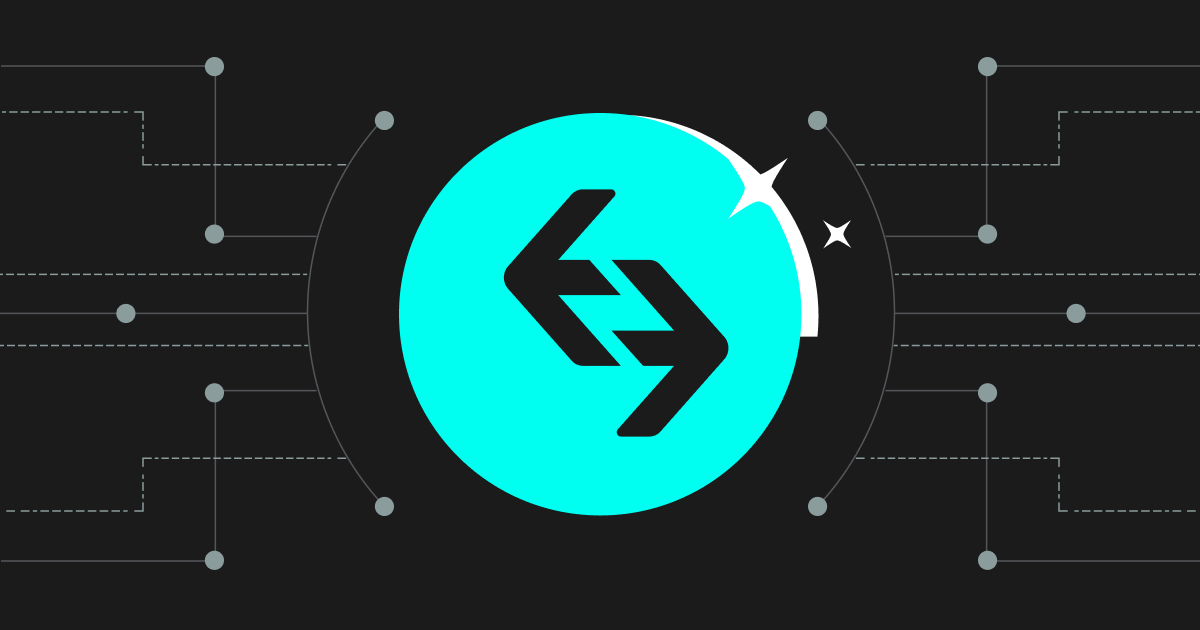-
 Bitcoin
Bitcoin $91,399.6094
4.86% -
 Ethereum
Ethereum $1,704.8681
8.06% -
 Tether USDt
Tether USDt $1.0005
0.05% -
 XRP
XRP $2.1564
3.60% -
 BNB
BNB $607.4562
1.91% -
 Solana
Solana $144.8137
6.06% -
 USDC
USDC $0.9998
0.00% -
 Dogecoin
Dogecoin $0.1730
8.98% -
 TRON
TRON $0.2448
-0.44% -
 Cardano
Cardano $0.6553
5.53% -
 Chainlink
Chainlink $13.8169
5.39% -
 Avalanche
Avalanche $21.6278
8.20% -
 UNUS SED LEO
UNUS SED LEO $9.0426
-1.05% -
 Stellar
Stellar $0.2602
3.01% -
 Sui
Sui $2.4591
11.77% -
 Shiba Inu
Shiba Inu $0.0...01330
7.32% -
 Toncoin
Toncoin $3.0077
3.87% -
 Hedera
Hedera $0.1768
4.48% -
 Bitcoin Cash
Bitcoin Cash $355.0080
3.50% -
 Litecoin
Litecoin $83.1356
6.40% -
 Hyperliquid
Hyperliquid $18.6550
4.13% -
 Polkadot
Polkadot $3.9039
2.01% -
 Dai
Dai $0.9999
0.01% -
 Bitget Token
Bitget Token $4.5079
1.72% -
 Ethena USDe
Ethena USDe $0.9996
0.03% -
 Pi
Pi $0.6406
0.99% -
 Monero
Monero $222.3341
3.54% -
 Pepe
Pepe $0.0...08496
8.99% -
 Uniswap
Uniswap $5.6500
7.25% -
 Aptos
Aptos $5.1191
2.52%
How to close Bitget contract
By following the comprehensive steps outlined in the Bitget guide, users can effectively close their contract positions, managing their risk and optimizing their trading strategies in the crypto futures market.
Nov 09, 2024 at 01:22 am

How to Close a Contract on Bitget: A Comprehensive Guide
Step 1: Login to Your Bitget Account
- Visit the Bitget website (https://www.bitget.com/) and click on "Log In" at the top right corner.
- Enter your email address and password and click on "Log In".
Step 2: Navigate to the Contract Trading Page
- Once you are logged in, hover over "Trade" in the top navigation bar and select "Contract" from the dropdown menu.
- Alternatively, you can click on "More" at the bottom of the navigation bar and select "Contract Trading".
Step 3: Choose the Contract Market
- On the Contract Trading page, select the contract market you want to close your position in.
- Common contract markets include BTCUSD, ETHUSD, and USDT-M futures.
Step 4: Find Your Open Positions
- After selecting the contract market, scroll down on the trading page to find the "Positions" section.
- Here, you will see a list of your open positions, including their size, entry price, and profit/loss.
Step 5: Select the Contract Position to Close
- Identify the contract position you want to close from the list of open positions.
- Click on the "Sell" or "Buy" button next to the position, depending on whether you opened a long or short position.
Step 6: Choose the Closing Type
In the pop-up window that appears, you can choose the closing type:
- Market Order: Close the position immediately at the current market price.
- Limit Order: Set a specific price at which you want the position to close.
Step 7: Enter the Closing Parameters
- For a market order, simply click on "Place Order" to close the position.
- For a limit order, enter the limit price and the order quantity, then click on "Place Order".
Step 8: Review the Closing Confirmation
- Before closing the position, you will be presented with a confirmation screen.
- Review the closing parameters, including the closing price, order type, and order quantity.
- Click on "Confirm" to proceed with the closing.
Step 9: Verify the Position Closure
- After the closing order is placed, it will execute and remove the open position from your account.
- You can verify the closure by checking the "Positions" section again and ensuring that the position you closed is no longer listed.
Disclaimer:info@kdj.com
The information provided is not trading advice. kdj.com does not assume any responsibility for any investments made based on the information provided in this article. Cryptocurrencies are highly volatile and it is highly recommended that you invest with caution after thorough research!
If you believe that the content used on this website infringes your copyright, please contact us immediately (info@kdj.com) and we will delete it promptly.
- Pi Network's native cryptocurrency, PI, is gaining traction once more after a significant price drop.
- 2025-04-23 05:05:12
- Unicoin Has Rebuffed the U.S. Securities and Exchange Commission's (SEC) Attempt to Negotiate a Settlement Agreement
- 2025-04-23 05:05:12
- Mantra (OM) Founder and CEO Mullin Announces Plan to Burn His Personal Allocation of 150 Million OM Tokens
- 2025-04-23 05:00:12
- Autonomous AI Agents Could Create Their Own Crypto-Monetary Hegemony
- 2025-04-23 05:00:12
- What Happened to Shares of Coinbase (COIN) Jumped 10.3%?
- 2025-04-23 04:55:12
- Best sweeps casino mobile apps + promo codes for new users
- 2025-04-23 04:55:12
Related knowledge

How does Tail Protection reduce the loss of liquidation?
Apr 11,2025 at 01:50am
Introduction to Tail Protection in CryptocurrencyTail Protection is a mechanism designed to mitigate the risks associated with liquidation in cryptocurrency trading. Liquidation occurs when a trader's position is forcibly closed by the exchange due to insufficient margin to cover potential losses. This often happens in leveraged trading, where traders b...

What are the consequences of an imbalance in the long-short ratio?
Apr 13,2025 at 02:50pm
The long-short ratio is a critical metric in the cryptocurrency trading world, reflecting the balance between bullish and bearish sentiments among traders. An imbalance in this ratio can have significant consequences on the market dynamics, affecting everything from price volatility to trading strategies. Understanding these consequences is essential fo...

How to judge the market trend by the position volume?
Apr 11,2025 at 02:29pm
Understanding how to judge the market trend by position volume is crucial for any cryptocurrency trader. Position volume, which refers to the total number of open positions in a particular cryptocurrency, can provide valuable insights into market sentiment and potential price movements. By analyzing this data, traders can make more informed decisions ab...

Why does a perpetual contract have no expiration date?
Apr 09,2025 at 08:43pm
Perpetual contracts, also known as perpetual futures or perpetual swaps, are a type of derivative product that has gained significant popularity in the cryptocurrency market. Unlike traditional futures contracts, which have a fixed expiration date, perpetual contracts do not expire. This unique feature raises the question: why does a perpetual contract ...

Why is the full-position mode riskier than the position-by-position mode?
Apr 13,2025 at 03:42pm
Why is the Full-Position Mode Riskier Than the Position-by-Position Mode? In the world of cryptocurrency trading, the choice between full-position mode and position-by-position mode can significantly impact the risk profile of a trader's portfolio. Understanding the differences between these two modes is crucial for making informed trading decisions. Th...

How is the liquidation price calculated?
Apr 12,2025 at 01:35am
Introduction to Liquidation PriceLiquidation price is a critical concept in the world of cryptocurrency trading, particularly when dealing with leveraged positions. Understanding how this price is calculated is essential for traders to manage their risk effectively. The liquidation price is the point at which a trader's position is forcibly closed by th...

How does Tail Protection reduce the loss of liquidation?
Apr 11,2025 at 01:50am
Introduction to Tail Protection in CryptocurrencyTail Protection is a mechanism designed to mitigate the risks associated with liquidation in cryptocurrency trading. Liquidation occurs when a trader's position is forcibly closed by the exchange due to insufficient margin to cover potential losses. This often happens in leveraged trading, where traders b...

What are the consequences of an imbalance in the long-short ratio?
Apr 13,2025 at 02:50pm
The long-short ratio is a critical metric in the cryptocurrency trading world, reflecting the balance between bullish and bearish sentiments among traders. An imbalance in this ratio can have significant consequences on the market dynamics, affecting everything from price volatility to trading strategies. Understanding these consequences is essential fo...

How to judge the market trend by the position volume?
Apr 11,2025 at 02:29pm
Understanding how to judge the market trend by position volume is crucial for any cryptocurrency trader. Position volume, which refers to the total number of open positions in a particular cryptocurrency, can provide valuable insights into market sentiment and potential price movements. By analyzing this data, traders can make more informed decisions ab...

Why does a perpetual contract have no expiration date?
Apr 09,2025 at 08:43pm
Perpetual contracts, also known as perpetual futures or perpetual swaps, are a type of derivative product that has gained significant popularity in the cryptocurrency market. Unlike traditional futures contracts, which have a fixed expiration date, perpetual contracts do not expire. This unique feature raises the question: why does a perpetual contract ...

Why is the full-position mode riskier than the position-by-position mode?
Apr 13,2025 at 03:42pm
Why is the Full-Position Mode Riskier Than the Position-by-Position Mode? In the world of cryptocurrency trading, the choice between full-position mode and position-by-position mode can significantly impact the risk profile of a trader's portfolio. Understanding the differences between these two modes is crucial for making informed trading decisions. Th...

How is the liquidation price calculated?
Apr 12,2025 at 01:35am
Introduction to Liquidation PriceLiquidation price is a critical concept in the world of cryptocurrency trading, particularly when dealing with leveraged positions. Understanding how this price is calculated is essential for traders to manage their risk effectively. The liquidation price is the point at which a trader's position is forcibly closed by th...
See all articles























































































